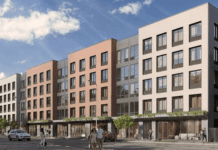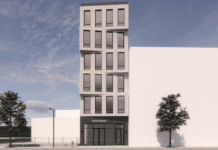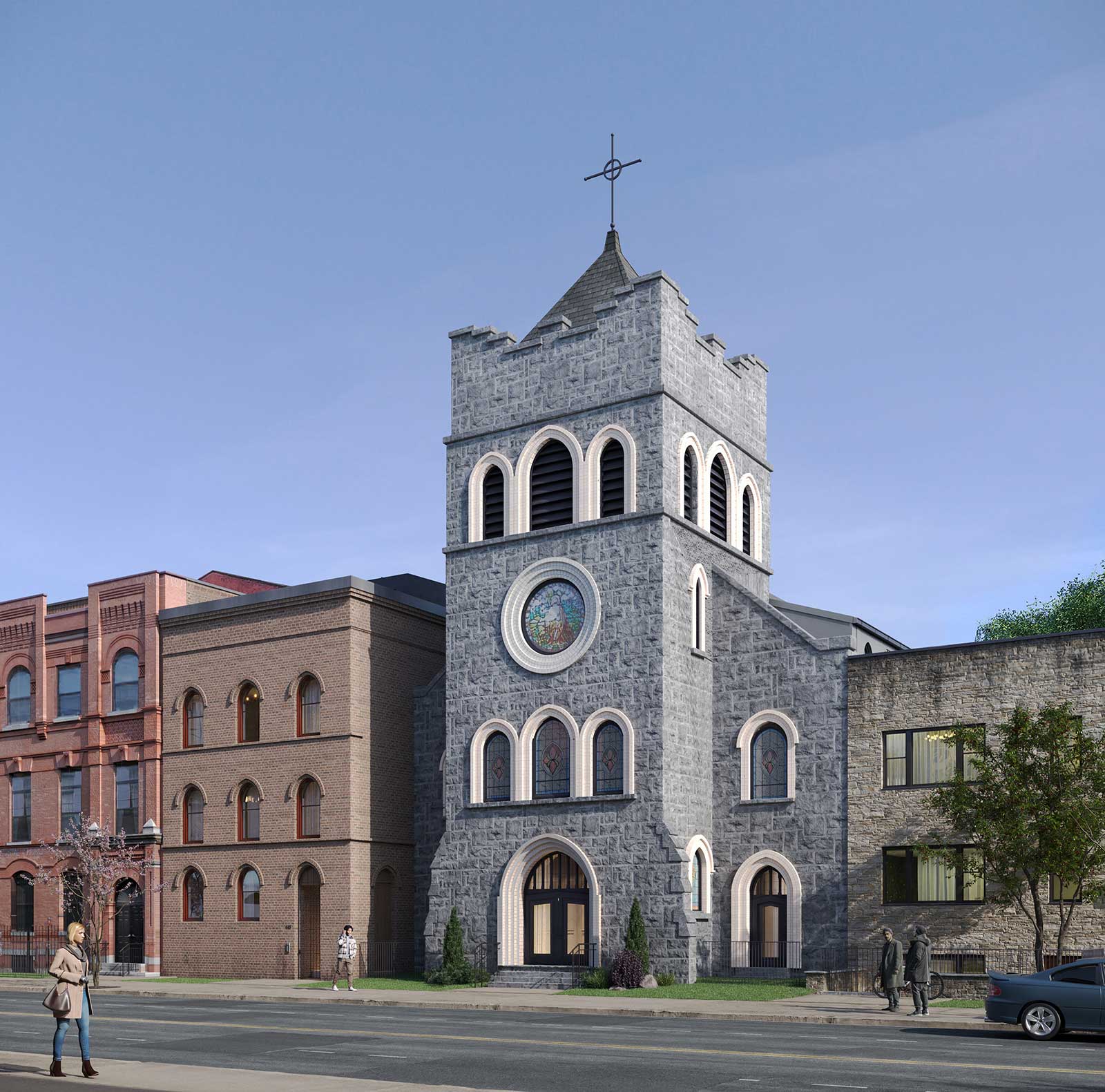
Not many know that architect Will Weckenmann nearly saved Brick Church in East Orange. The developer came to him with plans to knock it down and Weckenmann pleaded with him to spare it. He even drew up the plans that would have converted the 19th-century landmark into an apartment.
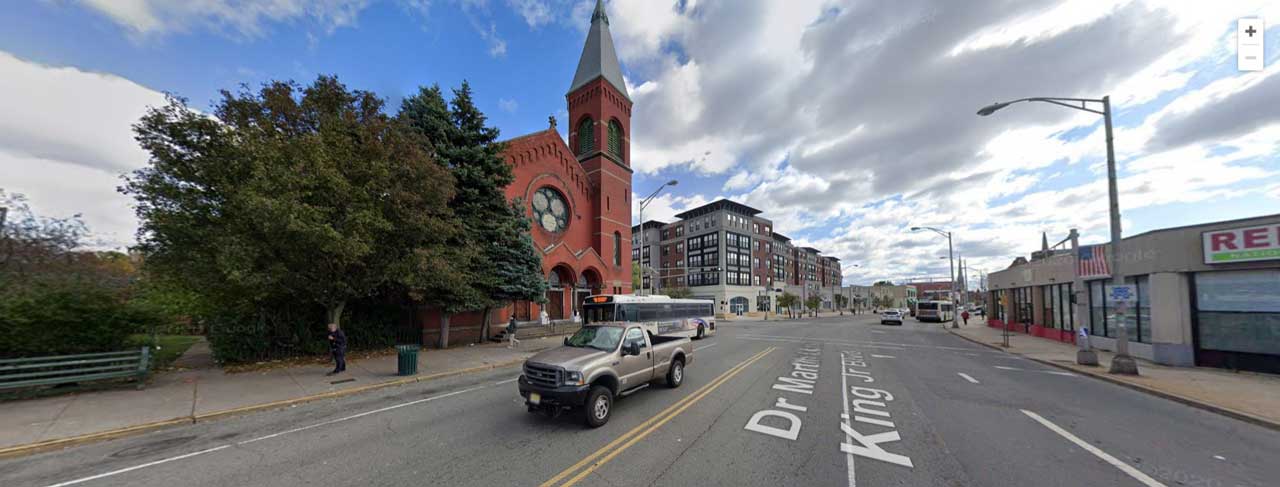
In the end, the city’s Zoning Board denied the application because it lacked ground-floor commercial space. Perhaps the assumption was that the developer would come back with a better plan. Instead, Brick Church was demolished.
“It made me sick,” Weckenmann said. “It was a beautiful building.”
When it comes to historic preservation, perfection is the enemy of good. Land use boards sometimes don’t get a second swing at the proverbial bat. Fortunately, this wouldn’t be the last time the 38-year-old architect would be tasked to save an important house of worship. In fact, with two other church conversions under his belt, it’s become somewhat of a niche offering at his Jersey City-based firm Weckenmann Architecture + Design.

The next opportunity was at an 1860 church at 328 Pacific Avenue, which he did for another firm. More recently, Weckenmann’s plans to renovate the old St. Mark’s Episcopal Church in the Van Vorst Park Historic District got final approvals. The church at 445 Jersey Avenue is being converted into an apartment building.
One of the Historic Preservation Commission members, Austin Sakong, said Weckenmann’s plans were a “pretty ingenious reimagination of the building.”
“It seems to be a very creative solution, especially if there is a way to have remnants of the original structure remain and be legible,” the commissioner said.
The trick to converting church buildings is all in the layout of the apartments. In this case, to maximize the square footage of the dwellings, Weckenmann moved the public entrance of the building to the side of the church.
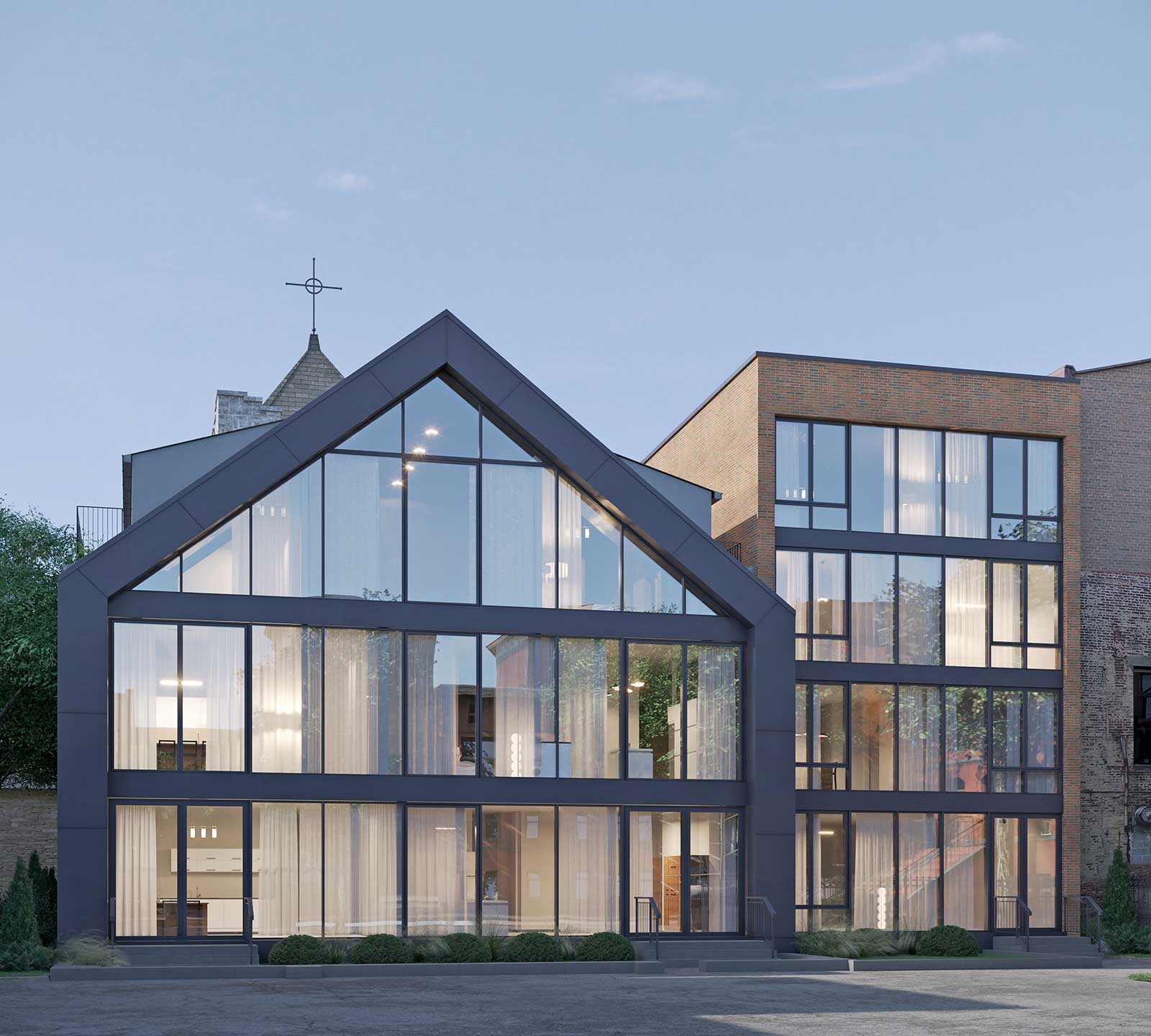
Image courtesy of Weckenmann Architecture + Design.
One of the highlights of the redesign is the period-appropriate dormers that solved a problem with a lack of windows in the building’s north side. In deciding the look of the dormer, Weckenmann turned to Gothic architecture for the shape and spacing of the windows.
“The size of windows in Gothic cathedrals often mark a transition within the church itself,” he said.
The project also includes a modern four-story addition in the rear. The rules of the historic district don’t prevent contemporary styles in parts of the building that aren’t visible from the street. Here, Weckenmann created a glass box whose shape has a subtle nod toward church architecture while creating a building with heightened transparency that the rest of the building lacks.
St. Mark’s opened in 1894. A long, poetic description appears in the Jersey City Times about the consecration of this new house of worship, which the reporter calls it a “pretty edifice.” It was one of nine Episcopalian congregations in the city at the time. The church’s founding pastor was the Reverend Frederick Mortimer. The church survived a fire in 1909. It’s possible that the congregation merged in the 1920s with another in the city’s Greenville neighborhood. Eventually a new congregation called New Bethel Baptist Church moved into the church on Jersey Avenue.
An interesting and scandalous tidbit about the church is that Mortimer’s brother, Alfred Garnett Mortimer, was also a pastor in Philadelphia who was fired from his post for breaking his vow of celibacy. At the height of the scandal, Mortimer’s brother sought refuge from pushy reporters at St. Mark’s Episcopal Church.
In Weckenmann’s design, among the standout features are the preservation of the stained-glass windows, including the rose window, which will be a showpiece in one of the units’ living room. In the same unit there is a 15-foot-tall masonry arch that will divide the kitchen from the living room. “The masonry detailing on the interior is going to be unique to those apartments,” Weckenmann said.
As congregations continue to close across the nation, more and more churches are facing the threat of demolition. Weckenmann believes its foolish to tear down these structures both from the perspective of an architect and a developer.
“There is tremendous value in these structures – inherently,” he said. “It gives us an opportunity to separate ourselves within the market and do units that are more unique and interesting – anytime there’s a church for sale we’d like to work on it.”
